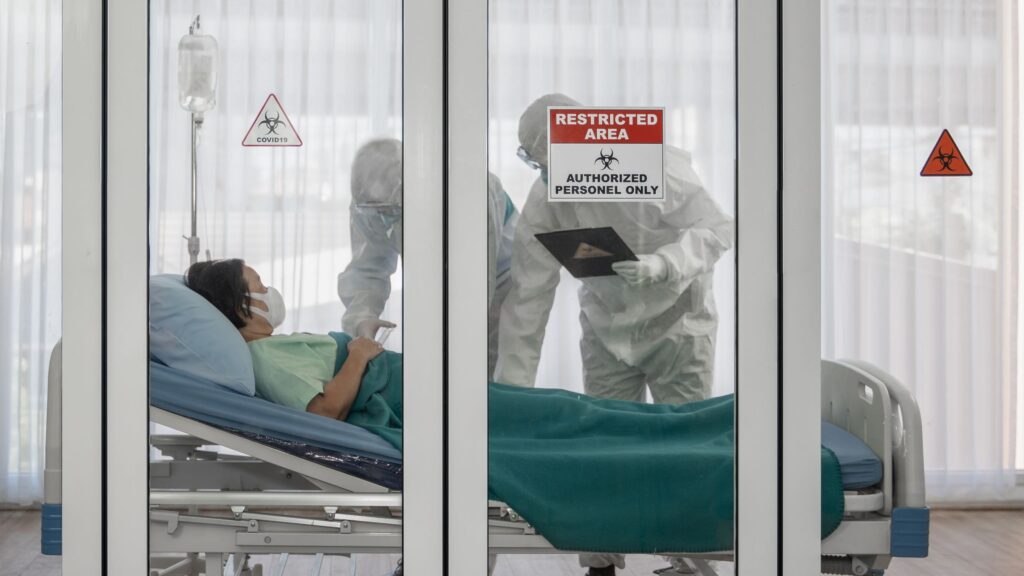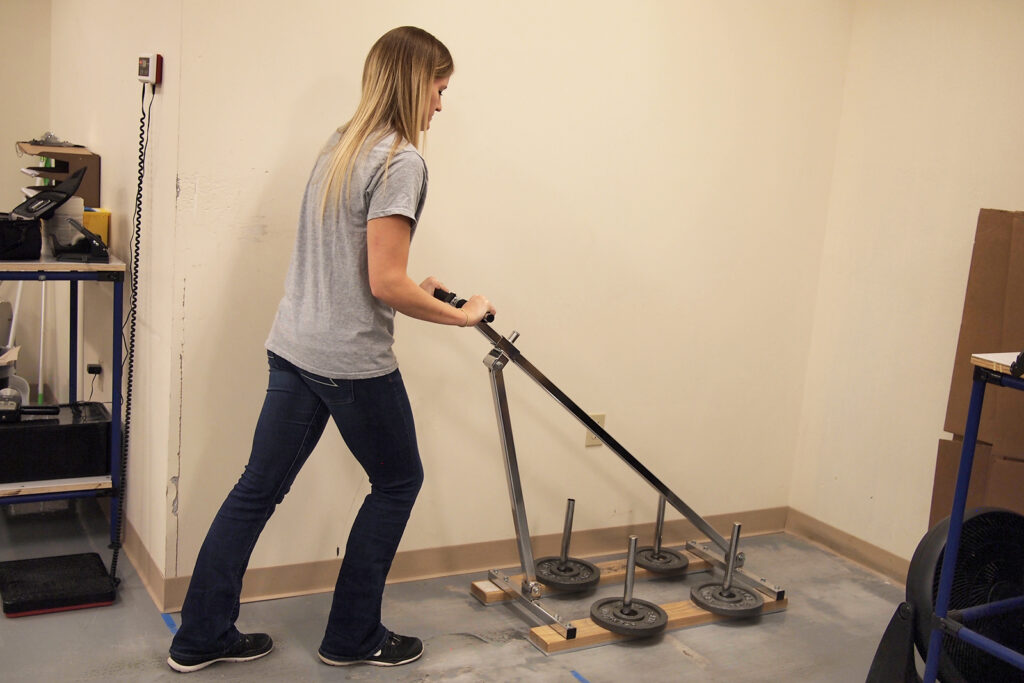A Message on COVID-19 from WorkSTEPS Chief Medical Officer, Dr. Ben Hoffman:
From Front Page to Front Yard – Helping Employees Cope as the Threat Turns Real
A very real crisis has been playing out in the NYC area, the epicenter of the Covid-19 pandemic in the US. Videos and news stories about heroic medical personnel working without adequate resources to care for rising numbers of critically sick people have motivated policymakers across the rest of the country to impose curve-flattening, social-distancing restrictions in hopes of avoiding a similar fate.
Unfortunately, while restrictions have helped to reduce the projected number of critically-ill and dead, the most recent models still predict that hospitals and healthcare workers across the country will be overwhelmed in the next three to four weeks.
The implication? Scenes now playing out on front pages will soon impact people on their front porches. Employees will not just be dealing with fear of what might happen, they’ll need to cope with reality of what is happening to relatives and friends who are critically ill or who are risking their lives to care for those who are sick and dying from Covid-19.
Because of this, more and more companies are asking what can be done to help their people better cope with rising fears and anxieties so they can not only be safe and effective on the job, but also better-equipped to handle stresses and strains at home.
To our knowledge, there is no easy answer. Most companies have already turned to their existing EAP and wellness vendors and have found their offerings somewhat helpful but insufficient to address a challenge of this magnitude. Further, the idea of bringing in a new vendor/program (if one even exists that can truly help soon enough) feels overwhelming.
So what to do?
I argue that if you could waive a wand and bestow one attribute on your employees to help them better cope, it would be resilience. Specifically, you’d want your leaders to be better at cultivating resiliency among people and teams, and you’d want all your employees to become more resilient people.
Why resilience?
I will never forget the days and nights that followed the attack on the World Trade Center towers on September 11, 2001. I was working for Waste Management at the time, and I was flown in to make sure that crews brought in to clear the waste were able to do so safely. I have never seen – nor do I ever hope to see again – people exhibit such resilience. The circumstances could not have been more tragic, chaotic and uncertain; and yet people rose to the challenge, banded together and persevered in figuring out how to do what had never before been done…and doing it respectfully and safely.
Much was written about resilience in subsequent months as societies, businesses and people focused on recovery. Among the more useful articles I remember reading was a piece by Diane Coutu in the May 2002 issue of Harvard Business Review titled How Resilience Works. She had spent years studying resilience and comparing theories about what made some people and companies more resilient than others. Observing an overlap among theories, she concluded resilient people and organizations possess three characteristics:
- They accept reality of their situation. While the author notes that optimism has its place in some circumstances, she concluded that it is more important that resilient people and companies have sober and down-to-earth views of those parts of reality that matter for survival.
- They can find meaning in the midst of trouble. Resilient people and companies have strongly held values and beliefs that shape how they interpret what’s happening and serve as a framework to build a bridge to a new reality. Values and beliefs anchor our understanding of who we are and what we stand for, regardless of circumstances, and that sort of certainty gives us—as individuals and as a company—a stronger sense that we will make it through challenges at least intact, if not better and stronger for the journey.
- They are innovative and resourceful. Resilient people and companies don’t muddle in the murk of circumstance, they look to invent solutions…to construct the new reality to which they aspire.
I will write more about how to help leaders and employees become more resilient beginning next week. In the meantime, I encourage you to think deeply about the characteristics above and how they apply to you, your colleagues and your company. I also encourage you to think about how you can help your people and your company better accept this reality, find meaning in the midst of it, and deal with it resourcefully.
Until then, be safe.
Ben Hoffman, MD, MPH
Chief Medical Officer, WorkSTEPS
Click here for more info on our Coronavirus Medical Hotline for Employers & Employees
Medical:
US doubling time: 3 days
The United States remains with the most reported COVID-19 cases of any country, followed by Spain (85,195 cases) and Italy (75,528 cases). The United States has reported approximately 50% more cases than China, but only 64% of the deaths (81,470 cases and 3,304 deaths in China).
Top US officials release an estimation of 100,000-240,000 deaths of Americans. This is less than the 2.2 million deaths previously estimated. The decrease is a result of social distancing and federal and state mandates flattening the curve of the pandemic.
As many as 25 percent of people infected with the new coronavirus may not show symptoms, the director of the Centers for Disease Control and Prevention warns — a startlingly high number that complicates efforts to predict the pandemic’s course and strategies to mitigate its spread.
The U.S. Food and Drug Administration has authorized the emergency use of Bodysphere, Inc’s test that can detect the coronavirus in nearly two minutes, the privately held company said on Tuesday.
Researchers at MIT propose that in addition to droplets, a cough or sneeze produces a “turbulent gas cloud” containing droplets and suspended nuclei of the virus in an aerosol. This gas cloud travels up to 8 meters and the aerosol portion remains airborne for several hours. They conclude that this explains the virus found in ventilation systems of hospitals, and state that the CDC guideline of 6 feet distancing is inadequate especially for health care workers.
Their work may partially explain the high transmissibility of the COVID-19 virus.
Initial non-randomized studies show marked clinical improvement following treatment with convalescent plasma containing neutralizing antibodies. The donor plasma had demonstrable IgG and IgM anti–SARS-CoV-19 antibodies and neutralized the virus in invitro cultures. Participants had severe disease and Acute Respiratory Distress Syndrome.
Mitigation / Suppression:
The US government invoked the Defense Production Act (DPA) for the first time, reportedly after negotiations with General Motors to produce ventilators stalled last week. This gives the US government authority to mandate production of items needed to fight the COVID-19 Pandemic.
The federal government has nearly emptied its emergency stockpile of protective medical supplies as state governors continue to plea for protective gear for desperate hospital workers, according to a senior administration official.
The CDC is revising its recommendation for limited use of face masks by the general population as studies now show a significant portion of people are asymptomatic carriers spreading the disease. The revision is anticipated to recommend widespread face mask use by the public.
Corporate:
6.6 million Americans filed for unemployment last week bringing the total to date to approximately 10 million.
New York Times: Small-Business Relief Effort ‘a Mess’
Ventilation strategies to reduce airborne transmission of respiratory disease:
American Society of Heating, Refrigerating and Air-Conditioning Engineers (ASHRAE) recommends the following strategies of interest to address disease transmission: dilution ventilation, laminar and other in-room flow regimes, differential room pressurization, personalized ventilation, source capture ventilation, filtration (central or unitary), and Ultraviolet Germicidal Irradiation (upper room, in-room and in the airstream).





